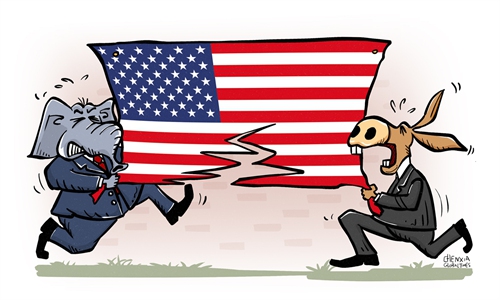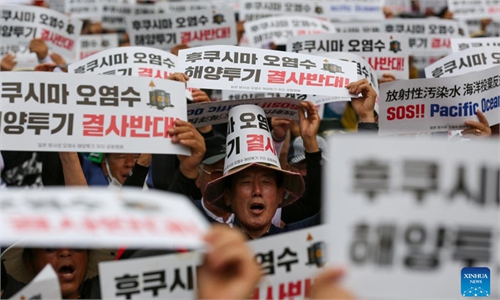ARTS / THEATER
Tibetan Opera seminar held in Beijing to promote intangible cultural heritage

Performers of the Tibetan Opera Epic of King Gesar Photo: Courtesy of the Yel Bumen Tibetan Opera Troupe
The Seminar on the Promotion of Tibetan Opera Art from a Multicultural Perspective was held in Beijing by the China Traditional Culture Museum (CTCM) on Friday, as part of a series of activities to enhance the intangible cultural heritage. It is also part of the "Study of Tibetan Opera Art System" program, which is funded by the Chinese National Academy of Arts (CNAA).
Tibetan Opera is a time-honored art form of China's Tibetan ethnic group, and also an essential component of traditional Chinese operas. It was inscribed into the Representative List of the Intangible Cultural Heritage of Humanity by UNESCO in 2009.
Boasting a history of 600 years, Tibetan Opera was created by Thangtong Gyalpo, according to legend. Traditional Tibetan Opera is composed of Obardon, Zhengxi and Tashi. Obardon, or the prelude, is usually started by a ritual of singing and dancing to clear the site, ward off evil spirits and pray for blessings. Zhengxi, or the formal part, normally includes the "Eight Big Tibetan Opera Plays," and Tashi, or the end, is a ceremony to pray for good luck.
The Nyangri Folk Art Troupe is the earliest township folk art troupe and one of the few that can perform the complete Eight Big Tibetan Opera Plays. Founded in the 1970s, it has been very active in local communities in Xizang, and has won many different awards at art festivals including the well-known China Lhasa Shoton Festival. Boasting a history of 43 years, it has inherited a number of national intangible cultural heritage items, such as Tibetan Opera, Duixie and Nangma singing and dancing.
From May 30 to Thursday, the Nyangri Folk Art Troupe also joined the seminar and presented scenes from Tibetan operas, including Nangsa Obar, Nangma Gyibai Nyima and Gar Langdro, involving different Tibetan singing, dancing and music styles.
The seminar was attended by many experts and scholars of Tibetan Opera. Both Migmar Butri, vice director of the Xizang Tibetan Opera Troupe and Migmar, director of the Nyangri Folk Art Troupe, gave detailed and in-depth introductions of Tibetan Opera and its related performances. Other experts expounded on Tibetan Opera art from diverse cultural perspectives, unanimously agreeing that Tibetan Opera is an important part of the culture and art of the Chinese nation. With its unique method of expression, it has helped to enrich the art system of traditional Chinese opera.
In terms of the inheritance and protection of Tibetan Opera, Tian Qing, a researcher with the CNAA and librarian at the Central Museum of Literature and History, told the Global Times about the importance of protecting intangible cultural heritage. "We should not only protect our cultural heritage, but also our spiritual home. And the development and innovation of intangible cultural heritage should be based on adherence to its essential elements."
Li Yue, a researcher with the CNAA's Traditional Opera Research Institute, echoed Tian's view. He said that to appreciate Tibetan Opera, we must stick to the artistic standards of its ethnic cultural tradition, aesthetic taste and special cultural space.
"The aesthetic features of Tibetan Opera rest upon its religion, region, ritual, popularity and humanity," Gu Chunfang, professor of arts at Peking University, told the Global Times. "Its inheritance and development cannot be separated from the very culture it lives in. So we should protect its features and prevent them from being damaged by commercialization."
In addition, study of the Tibetan language should be regarded as a breakthrough for studying operas of other ethnic groups, according to Mao Xiaoyu, another researcher with the CNAA's Traditional Opera Research Institute. In his view, Tibetan Opera should not only persist in its tradition but also enter the market through creating new forms.
In this regard, Ma Guojun, professor of the Central Academy of Drama shared his ideas. He told the Global Times that there are many similarities between Tibetan Opera and most of the traditional operas of the Chinese nation. It is worth recognizing that today's Tibetan Opera has still retained its original cultural spirit. Even if some new plays have been written and performed, they should never change the original performance venues and fixed schedules.
Su Faxiang, director and professor of the Institute of Tibetology of Minzu University of China, told the Global Times that Tibetan Opera is an aesthetic art in terms of its origin, content, dances, singing tunes, costumes and music. Thanks to the great attention paid by the Chinese central government, it has developed very fast, but its research and promotion still need to be improved.
His colleague Ganmugu also recalled watching Tibetan Opera in his hometown when he was young, saying that one should keep calm when watching Tibetan Opera as peace of mind contributes to the cultivation of one's body.
Wang Kui, director of the institute, said that Tibetan Opera requires people to have peace of mind and soul. Showing our respect for this art form can allow people to understand that the traditions created by our ancestors exist in our blood with the power to live forever.
He also emphasized that the preservation of the traditional features of Tibetan Opera should be attributed to the perseverance of generations of Tibetan Opera troupes and individuals, the care of society, and especially the strong support of the Chinese central and Tibetan local governments in recent decades.



